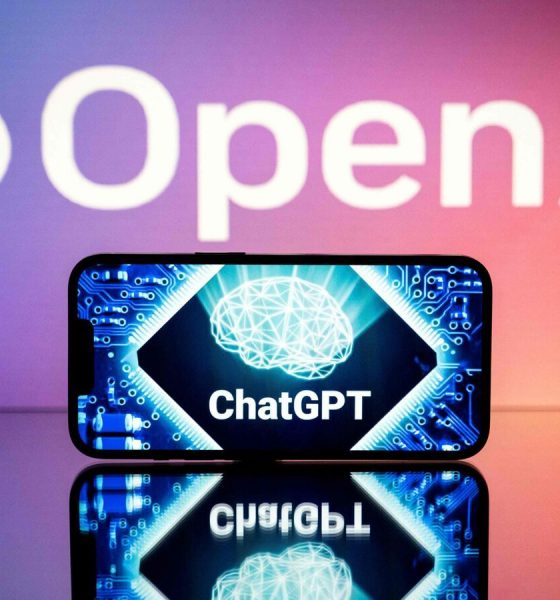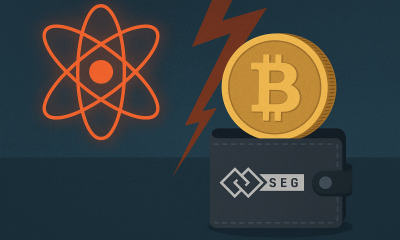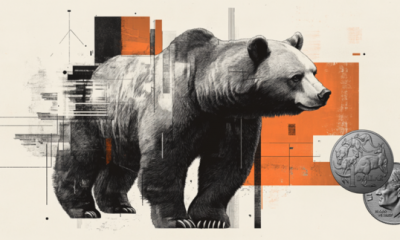

Metaverse
Your deep research tool may save you time, but can it save you embarrassment? – Crypto News
For instance, Edison Scientific’s Kosmos, launched on 7 November, claims to complete six months of research in a single day, reading 1,500 papers and producing structured analyses in one run. In theory, AI can now turn a single prompt into a full-fledged hypothesis, generate data, and draft a referenced paper. But while the technology dazzles with speed and scale, the question is not whether AI can conduct research, but whether we should trust it.
Despite persistent issues like data fabrication and hallucination, AI remains a powerful assistant. But can it be a scientist?
Are AI tools really automating the idea-to-publication research process?
Traditional research is slow and expensive, often requiring years and millions in funding to yield results. Now, AI agents can retrieve, read, summarize, cite, and even draft entire papers from a single structured prompt. On 7 November, Sam Rodriques, chief executive of FutureHouse and Edison Scientific, introduced Kosmos, calling it their “new AI scientist”.
Kosmos reportedly completes six months of research in a single day—reading 1,500 papers, writing 42,000 lines of code, and producing findings that are 79% reproducible. It has already contributed seven discoveries in neuroscience, materials science, and clinical genetics, including four validated new findings.
Other tools are rapidly following suit. ThesisAI can draft up to 80 pages with inline citations from one prompt, while Paperpal serves as an AI co-pilot for researchers and students. Platforms like Elicit, Consensus, and Paperguide automate literature reviews across 100 million papers, and more advanced systems, such as Energent.ai and Iris.ai, claim to map research gaps, extract data, and generate full visualisations or reports. The once-linear research pipeline is being rebuilt—by machines.
Is using AI tools an effective strategy for research?
The answer appears to be a ‘Yes’, at least in terms of productivity and cost. A January 2025 review in the pharmacy journal Frontiers in Pharmacology found that AI reduced researchers’ workload by five to six times and cut costs by 10 times in systematic literature reviews (a step-by-step study of all existing research on a specific question or topic). An October 2024 Northwestern University analysis of 74.6 million papers, 7.1 million patents, and 4.2 million syllabi revealed that research using AI enjoyed a measurable “citation impact premium”. Papers referencing AI terms were not only more cited but also more interdisciplinary and more likely to rank among the top 5% most cited in their fields.
Likewise, in a 10 December 2024 paper titled, AI , researchers from the Tsinghua University, the Beijing National Research Center for Information Science and Technology (BNRist), the University of Chicago, and Santa Fe Institute, analyzed 67.9 million research papers and found scientists who adopt AI tools publish 67% more papers, receive 3.16 times more citations, and reach leadership roles four years earlier than non-adopters.
For businesses, the value is faster insights, cheaper research and development, and a competitive advantage in discovery-driven sectors.
That said, quality concerns persist even as it’s getting harder to distinguish AI-generated content from human-written work without help from AI detection tools. According to the AI code review platform Graphite, AI-generated articles (typically, shorter) overtook human-written ones (mostly, longer) online in November 2024, and distinguishing the two now often requires AI detection tools.
How do these tools actually work?
While general AI assistants such as ChatGPT can answer research questions, they lack the autonomous workflow, specialized tools, and orchestration that define advanced deep research systems, explained researchers from Zhejiang University in a 14 July paper. Conventional tools such as citation managers, literature search engines, or statistical packages handle isolated tasks. For instance, SciSpace ChatPDF or NotebookLM can summarize a paper or answer follow-up questions instantly, but they operate in silos.
Deep research tools, by contrast, integrate large language models (LLMs) with information retrieval systems and automated reasoning frameworks. This combination enables them to search, interpret, and generate new hypotheses in a single, coordinated process. Kosmos, for example, draws from 175 million papers, trials, and patents, using reasoning agents that connect findings, test ideas, and draft structured reports. OpenAI’s Deep Research and Google’s AI co-scientist adopt similar multi-agent architectures, where one agent retrieves data, another reasons through it, and a third produces outputs. In short, these systems automate much of what junior researchers or analysts traditionally do—reading, linking, and writing—only at machine speed.
But how reliable and accurate is AI-generated research?
Multiple investigations have shown a surge in undeclared AI-generated text in academic papers, raising concerns about plagiarism, copyright violations, and the overall credibility of these works.
In November 2024, Alex Glynn, assistant professor at the University of Louisville and founder of Academ-AI, analyzed over 500 suspected cases of AI-generated content in journals, including those published by Elsevier, Springer Nature, and Wiley, and later shared the findings on arXiv.
Accuracy is another major worry. GPT-based citation tools show error rates of 20-30%, and approximately 20% of Kosmos’ findings are reportedly unreliable. Kosmos’ creator, Sam Rodriques, admits the model often “chases statistically significant but scientifically irrelevant results”. Such errors can lead to retractions, lawsuits, or costly missteps, especially when businesses use AI-derived findings, such as biotech firms designing drugs based on faulty data.
Further, the above-cited December 2024 study reveals that while AI-enabled scientists publish more papers, they explore fewer new ideas, suggesting a narrowing of scientific inquiry. Without transparency, training, and open data, AI could deepen a divide between AI-augmented and AI-excluded researchers—concentrating innovation in wealthy labs and leading to repetitive, incremental discoveries rather than bold, original science.
How are these concerns being addressed?
AI can assist, but it cannot replace human expertise, judgment, or accountability. Researchers still require in-depth knowledge of their fields and critical thinking skills, especially since AI models may be outdated or prone to absurd errors, as seen in the case of the AI-generated rat image that embarrassed the interdisciplinary journal Frontiers in Cell Development and Biology. The key challenge is balancing speed, cost, and scientific reliability. Simply put, the most accurate models aren’t always the most efficient or affordable.
Universities and publishers, meanwhile, are setting clearer guidelines to reduce errors and address grey areas. Bond University, for instance, now endorses Microsoft Copilot and Adobe Firefly for staff and students, stressing that users remain ethically responsible for all AI-generated content they include. JAMA, the American medical network, explicitly states that AI tools do not qualify for authorship and has launched a JAMA + AI site to educate researchers. SpringerNature and Elsevier take similar positions: AI tools may assist with writing or data analysis, but authors must disclose their use and retain full accountability.
In short, while AI can accelerate discovery, human oversight remains non-negotiable because only people can ensure that research stays credible, ethical and truly scientific.
-

 Technology1 week ago
Technology1 week agoFlipkart deal alert: Samsung Galaxy S24 Ultra 5G available with up to ₹50,000 savings – here’s how the deal works – Crypto News
-

 Blockchain1 week ago
Blockchain1 week agoXRP ETFs Listed On DTCC Ahead Of Possible Launch – Crypto News
-

 Blockchain1 week ago
Blockchain1 week agoEthereum (ETH) Holds Strong as Analysts Target $4,400 Despite ETF Outflows – Crypto News
-
Technology1 week ago
Breaking: Coinbase Launches Token Sales Platform for Retail Investors – Crypto News
-
Business1 week ago
Michael Saylor Hints Bitcoin Buy As Goldman Sachs Predicts Three Fed Rate Cuts – Crypto News
-
Business1 week ago
Breaking: Coinbase Launches Token Sales Platform for Retail Investors – Crypto News
-
Technology1 week ago
Filecoin Price Rockets 51% as Grayscale’s FIL Holdings Hit Record High — What’s Next for FIL? – Crypto News
-
Business1 week ago
Trump Tariffs: Crypto Market Surges After $400B Dividend Announcement for Americans – Crypto News
-

 Cryptocurrency1 week ago
Cryptocurrency1 week agoHow Strive’s $162M Bitcoin bet could make it the next MicroStrategy – Crypto News
-

 Cryptocurrency1 week ago
Cryptocurrency1 week agoWhat is the Fusaka Upgrade? Ethereum’s Biggest Scaling Bet Yet – Crypto News
-

 Metaverse1 week ago
Metaverse1 week agoWhat’s in India’s first AI rulebook? – Crypto News
-

 Cryptocurrency1 week ago
Cryptocurrency1 week agoBitcoin faces quantum risk: why SegWit wallets may offer limited protection – Crypto News
-

 De-fi1 week ago
De-fi1 week agoBTC Holds Out Above $102,000 as Markets Trade Flat – Crypto News
-
Business1 week ago
Post-Giveaway Supply Shock: Impact on FUNToken’s Liquidity and Market Depth – Crypto News
-
Technology1 week ago
Michael Saylor Hints Bitcoin Buy As Goldman Sachs Predicts Three Fed Rate Cuts – Crypto News
-

 Blockchain1 week ago
Blockchain1 week agoSolana (SOL) Turns Positive Amid Market Calm — Does the Trend Have Legs? – Crypto News
-

 De-fi6 days ago
De-fi6 days agoZEC Jumps as Winklevoss‑Backed Cypherpunk Reveals $100M Zcash Treasury – Crypto News
-
others1 week ago
Bitcoin vs Gold: BitMEX Co-Founder Arthur Hayes Explains Why Nations Still Prefer Buying Gold – Crypto News
-

 De-fi1 week ago
De-fi1 week agoBitcoin Hovers Around $105,000 as Government Shutdown Progress Lifts Markets – Crypto News
-

 Blockchain1 week ago
Blockchain1 week agoSquare Enables Bitcoin Payments for Sellers – Crypto News
-
others1 week ago
Breaking: Canary XRP ETF Gets Approval with 8-A Filing to List on Nasdaq – Crypto News
-

 De-fi5 days ago
De-fi5 days agoKraken’s xStocks Hit $10B in Total Trading Volume – Crypto News
-
Business1 week ago
Bitget Taps Ex-Adobe Marketer as CMO to Push Towards ‘Universal Exchange’ – Crypto News
-

 Blockchain1 week ago
Blockchain1 week agoAmerican Bitcoin Now Holds Over 4,000 BTC – Crypto News
-

 Cryptocurrency1 week ago
Cryptocurrency1 week agoDecred defies market downtrend, jumps to 4-year high: analysts see path to $100 – Crypto News
-

 others1 week ago
others1 week agoGold retreats from three-week high but retains bullish outlook – Crypto News
-

 De-fi1 week ago
De-fi1 week agoThreshold Network Upgrades tBTC Bridge to Link Institutional Bitcoin with DeFi – Crypto News
-

 De-fi7 days ago
De-fi7 days agoTrump Tokens Outperform After US President Teases ‘Tariff Dividends’ – Crypto News
-

 De-fi7 days ago
De-fi7 days agoXPL Rallies After Plasma Reveals Collaboration with Daylight Energy – Crypto News
-

 Cryptocurrency6 days ago
Cryptocurrency6 days agoBitcoin (BTC) battles macro headwinds despite improved ETF inflows – Crypto News
-

 Metaverse4 days ago
Metaverse4 days agoClaude Desktop is your new best friend for an organized PC – Crypto News
-

 Metaverse4 days ago
Metaverse4 days agoClaude Desktop is your new best friend for an organized PC – Crypto News
-

 Metaverse1 week ago
Metaverse1 week agoWhat is Kimi AI? Chinese chatbot beats ChatGPT, Claude on major benchmarks – Crypto News
-

 Technology1 week ago
Technology1 week agoPerplexity AI is finally bringing Comet browser to Android: here’s who gets access first – Crypto News
-

 others1 week ago
others1 week agoUS Senate advances government funding bill to end shutdown – Crypto News
-

 others1 week ago
others1 week agoAustralian Dollar loses ground despite stronger Westpac Consumer Confidence – Crypto News
-
others1 week ago
Bitcoin News: BTC Exchange Reserves Fall as Tether Mints $1B USDT – Crypto News
-

 De-fi1 week ago
De-fi1 week agoMonad Faces Community Backlash After Unveiling Tokenomics – Crypto News
-

 De-fi1 week ago
De-fi1 week agoInstitutional Sentiment is Turning Bearish on Crypto: Sygnum – Crypto News
-

 Technology1 week ago
Technology1 week agoChinas cryptoqueen jailed in UK over $6.6 billion Bitcoin scam – Crypto News
-

 De-fi1 week ago
De-fi1 week agoEthereum Sees First Sustained Validator Exit Since Proof-of-Stake Shift – Crypto News
-

 De-fi6 days ago
De-fi6 days agoSKY Surges 14% as Savings TVL Passes $4 Billion – Crypto News
-

 Technology3 days ago
Technology3 days agoPerplexity faces harsh crowd verdict at major San Francisco AI conference: ‘Most likely to flop’ – Crypto News
-
Business1 week ago
Post-Giveaway Supply Shock: Impact on FUNToken’s Liquidity and Market Depth – Crypto News
-

 Cryptocurrency1 week ago
Cryptocurrency1 week agoLearn How This New Altcoin is Merging XRP and Solana Together in 2025 – Crypto News
-

 Technology1 week ago
Technology1 week agoWho is Noam Shazeer? AI leader Google paid $2.7 billion to hire, now sparking internal tensions – Crypto News
-

 Blockchain1 week ago
Blockchain1 week agoTrump Media Reveals Bitcoin and Cronos Holdings Amid Q3 Loss – Crypto News
-
Business1 week ago
XRP Set for a Big Week as Canary Capital ETF Launches on November 13 – Crypto News
-
Cryptocurrency1 week ago
Can Dogecoin Price Hold Above $0.17 Amid Weekly Surge? – Crypto News
-

 Cryptocurrency7 days ago
Cryptocurrency7 days agoXRP’s Big Moment? Why Nov. 13 Could Be the Day Ripple Investors Have Waited For – Crypto News










